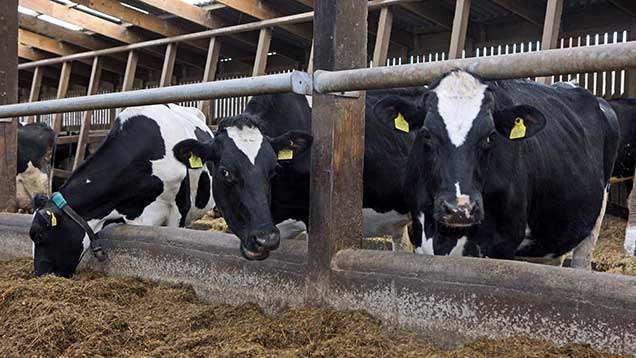Target greater dairy feed efficiency instead of cutting ration costs
 © Richard Stanton
© Richard Stanton Reformulating dairy rations in an effort to reduce feed costs and stave off the impact of lower milk prices can have a negative effect on feed efficiency and ultimately profitability, dairy farmers are being warned.
Instead Cargill’s ruminant specialist Philip Ingram says producers should be targeting greater feed efficiency through better use of feed inputs.
He explains: “An improved ration may increase feed costs marginally, but the subsequent increase in yields will offset this. And, at a lower milk price, this return will be significantly higher than in periods of higher milk prices.”
See also: Feed mash boosts milk yields on Scottish dairy farm
Dr Ingram uses an example of a diet improvement that increases feed cost per day from £4 to £4.09 and leads to a 1.5 litre increase in yield, or approximately a 5% increase in feed efficiency.
He says this will yield 11% more income over feed cost when milk price is 20ppl (see table below).
|
Herd size |
250 cows |
Herd Size |
250 cows |
|
|
Feed cost a day |
£4/head |
Feed cost a day |
£4.09/head |
|
|
Monthly feed cost |
£31,000 |
Monthly feed cost |
£31,698/head |
|
|
Yield/day |
30 litres |
Yield/day |
31.50 litres |
Increase in feed efficiency of 5% |
|
Monthly milk income |
£46,500 |
Monthly milk income |
£48,825 |
|
|
Margin over feed |
£15,500 |
Margin over feed |
£17, 128 |
|
|
Extra income |
£1,628 |
11% increase |
“When the goal is cost reduction, producers often have to settle for slightly less production. In most cases this means a reduction in feed efficiency and a less profitable situation because total costs have to be spread across fewer litres.
He adds: “Producers mustn’t lose sight of this improved feed efficiency in their effort to temporarily reduce costs.”
Top tips for increasing feed efficiency:
- Aim to get more for forages by using feed additives to increase fibre digestion.
- Review cow comfort and day-today feeding and management routines.
See also: Tips to improve ration consistency
